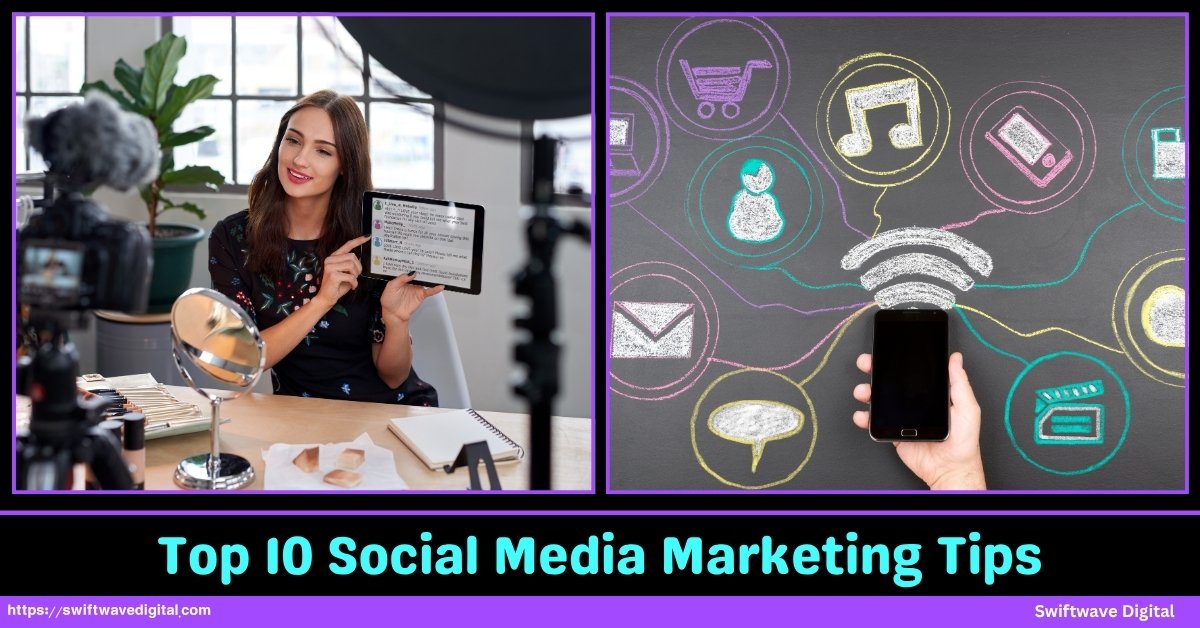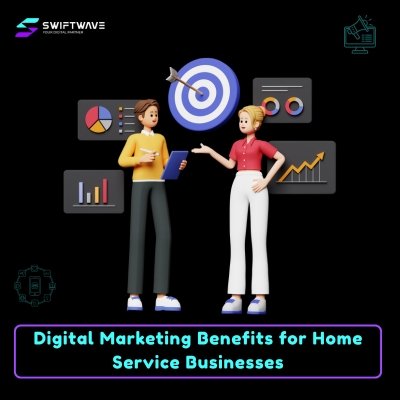Social Media Marketing has become one of the most powerful tools for businesses to build visibility, connect with audiences, and drive real growth.
Whether you’re running a local startup or managing a global brand, your customers are already scrolling, sharing, and searching on social platforms and your business needs to be part of that conversation.
According to Statista (2025), over 5 billion people actively use social media, making it a prime channel to influence buying decisions, strengthen brand trust, and increase conversions.
But success doesn’t come from random posting or chasing trends; it comes from understanding algorithms, crafting value-driven content, and staying consistent with data-backed strategies.
In today’s digital landscape, the difference between a brand that thrives and one that fades lies in how smartly it manages its social presence.
You don’t need big budgets you need the right approach, clear goals, and audience-focused tactics that deliver measurable results.
Top 10 Social Media Marketing Tips
In this guide, we will explain the top 10 social media marketing tips that actually work and help your business grow.

1. Start with Data, Not Assumptions
The foundation of effective social media marketing is data. Many brands make the mistake of guessing their audience’s interests or posting at random times without evidence. Every social media platform provides free insights use them.
Analytics show who your followers are, when they’re active, and what type of content they engage with most. For example, Instagram Insights gives clear metrics on reach, engagement, and follower demographics.
Facebook Page Insights shows which posts performed best and when your audience is online. Use this information to decide what to post, when to post, and how to engage.
Collecting and interpreting data helps you understand audience behavior, not just audience size. Data-driven decisions lead to more engagement, lower ad costs, and better long-term performance.
The more you rely on analytics rather than assumptions, the more predictable and consistent your results become.
2. Focus on One Core Platform First
It’s tempting to be active on every social platform — Instagram, Facebook, TikTok, YouTube, LinkedIn, and X (Twitter). But spreading yourself too thin usually weakens results.
The smarter strategy is to master one core platform before expanding. Start by identifying where your audience spends most of their time. A fitness coach might get better results on Instagram, while a B2B service provider might perform better on LinkedIn.
Once you choose your primary platform, dedicate full attention to understanding its algorithm, content format, and audience engagement style. Post regularly, engage deeply, and test what works.
After you achieve consistent results, you can repurpose content for other platforms. Building dominance in one place first gives your brand identity, authority, and efficiency.
When you do expand, you’ll have a proven formula that transfers across channels instead of starting from scratch everywhere.
3. Post Consistently, But with Purpose
Consistency is one of the strongest signals social platforms consider when promoting your content. Posting consistently tells the algorithm that your account is active and reliable.
But consistency alone is not enough it must have purpose. Random or repetitive posts don’t help. Your content plan should be structured with a clear balance: educational, engaging, and promotional.
Create a monthly calendar that outlines what to post each week, ensuring variety and direction. Instead of focusing on quantity, focus on timing and value.
Three high-quality posts per week can perform better than daily filler content. Scheduling tools like Buffer, Hootsuite, or Meta Business Suite make it easier to plan and maintain regular posting without burnout.
The goal is to make your audience expect value from you, not noise. A consistent rhythm with meaningful intent builds recognition and trust over time.
4. Use Video as Your Primary Content Weapon
Video dominates social media. It’s proven to capture attention faster and hold it longer than static images or text posts. Platforms like Instagram, TikTok, YouTube Shorts, and Facebook Reels are pushing video content because it increases engagement time.
For marketers, this means video should be your top priority.
Keep your videos short, clear, and action-oriented. The first few seconds should grab attention use a question, a strong statement, or a bold visual start.
Always include subtitles, as most users watch without sound. Avoid unnecessary effects; focus on clarity and message delivery. Regularly post short videos explaining your product benefits, sharing quick tips, or showing behind-the-scenes content.
Remember that authenticity performs better than perfection. Even simple, well-explained videos recorded on a phone can outperform professionally edited ones if they deliver value. The message matters more than the production.
5. Build Relationships, Not Just Reach
Social media is about connection, not broadcasting. Brands that treat followers like numbers rarely build loyalty. The real goal is to turn followers into a community.
Reply to comments, answer DMs, and thank users who share or tag your content. A single genuine interaction can turn a casual follower into a long-term customer. Engagement improves visibility too platforms push posts with higher comment activity.
Go beyond posting and start conversations. Ask questions, run polls, and create opportunities for users to share opinions. Encourage user-generated content by inviting your audience to post photos or experiences using your products.
When people feel seen and valued, they respond with loyalty. Remember, relationship-based marketing compounds the more genuine connections you build, the less you have to spend on paid visibility later. Engagement is not a side task; it’s the core of organic growth.
6. Leverage Paid Ads, But Test Relentlessly
Organic reach continues to decline across platforms, which makes paid advertising an essential part of social media strategy. However, simply boosting posts is not enough.
The real key is testing. Start small with multiple ad variations change one element at a time, such as the headline, image, or call-to-action. This process is called A/B testing. Within a few days, you’ll see which version performs better.
Keep the winning version and drop the weaker one. Focus your ads on specific goals: engagement, leads, or conversions. Never send paid traffic to a general homepage; use targeted landing pages that match your ad’s promise.
Track key metrics like click-through rate (CTR), cost per result, and conversion rate. Paid ads don’t need massive budgets — they need smart optimization.
Test, analyze, and adjust continuously. The brands that test more often waste less money and gain faster growth.
7. Tell Stories That Educate and Convert
Facts may inform, but stories persuade. Every strong social media post tells a mini-story that connects a problem with a solution. Storytelling in marketing doesn’t mean creating fiction it means structuring your message so the audience recognizes themselves in it.
The simple approach is to use the Problem–Agitate–Solution framework. Identify a real issue your audience faces, highlight the cost or frustration of ignoring it, then present your product or service as the answer.
This structure works because it triggers understanding and emotion at the same time. Instead of saying, “Our software is fast,” say, “Tired of wasting hours on manual reports? Automate it in minutes.”
This approach turns basic content into communication that moves people to act. Educational storytelling builds trust, while persuasive structure converts interest into results.
Every caption, video, or ad should follow a clear narrative flow — from problem to solution.
8. Use Data Analytics to Guide Every Move
Social media success depends on ongoing measurement. Without analytics, you can’t know what’s working or failing. Data helps you refine strategy, cut waste, and improve engagement.
Every platform provides insights that show reach, clicks, likes, shares, and saves. Combine these with external tools like Google Analytics or Data Studio to track conversions and website traffic from social channels.
Watch trends weekly and note what content performs best. High saves or shares mean your content has value. High impressions with low engagement may mean weak messaging.
Use engagement rate, click-through rate, and cost per result as your key indicators. Make data reviews a habit, not a monthly task.
The brands that grow consistently are the ones that treat numbers as feedback, not decoration. Analytics don’t replace creativity they direct it. Every post should have a measurable purpose, and every campaign should have clear results.
9. Collaborate with Micro-Influencers
Influencer marketing isn’t limited to big names. In fact, smaller creators often deliver better outcomes. Micro-influencers — those with 10,000 to 50,000 followers usually have more engaged audiences.
Their followers trust their opinions because they appear more relatable and genuine. Partnering with micro-influencers gives your brand access to loyal, niche communities at a lower cost.
Choose influencers who align with your product’s values and audience, not just high follower counts. Send them your product, offer a collaboration deal, or run co-branded campaigns.
Track their performance with discount codes or trackable links. The goal is to build awareness through authentic recommendations, not scripted promotions.
When influencers genuinely like what you offer, their audience responds naturally. Collaboration also creates valuable content you can reuse on your channels.
Building long-term relationships with a few trusted influencers can outperform one-time celebrity deals every single time.
10. Adapt Fast Algorithms Won’t Wait
Social media algorithms change constantly. What worked a few months ago may not work today. Instead of chasing trends blindly, develop adaptability.
Stay informed by following reliable marketing updates and testing small changes regularly. If a platform releases a new feature, use it early algorithms often reward early adopters. Keep monitoring your analytics to spot shifts in engagement or reach.
If your usual format drops in performance, adjust your content type or posting time. Always keep your strategy flexible. Trends, tools, and user behavior evolve quickly, so static plans fail.
Dedicate time each month to review what’s new and what’s outdated. This habit prevents your content from becoming invisible in the feed.
The fastest learners win on social media, not the biggest spenders. Adaptation isn’t just about keeping up — it’s about staying relevant in an environment that never stops changing.
Bonus Tip: Stop Treating Social Media as a Side Task
One of the biggest mistakes businesses make is treating social media as an afterthought. Posting occasionally, replying late, or outsourcing without direction signals inconsistency.
In today’s environment, social media is not optional — it’s a primary customer touchpoint. Before most customers visit your website or store, they check your social presence.
That means your feed, responses, and activity form your first impression. Allocate proper time and resources to manage it. Create a structured workflow that includes planning, creation, posting, and engagement.
Assign clear responsibilities within your team. Track progress weekly and review content performance monthly. Treating social media as a serious marketing function improves credibility and ROI.
Brands that take it seriously see faster growth, better brand recall, and stronger customer retention. Social media should work alongside your other marketing systems — not lag behind them. Consistent attention builds consistent reputation.
Conclusion
Social Media Marketing today is not about posting more it’s about posting smarter. Success comes from building a structured system that combines data, consistency, and adaptability.
Every platform rewards brands that understand their audience, deliver value, and engage authentically. When you start with analytics instead of assumptions, create meaningful content, and test continuously, your efforts turn into measurable results.
The key is to focus on what truly drives attention relevance, clarity, and connection. Videos, community interaction, influencer collaborations, and paid campaigns all work best when guided by real insights.
In a fast-changing digital landscape, flexibility is your biggest advantage. Keep refining your approach based on feedback, trends, and performance metrics.
Treat your social media presence as a vital part of your business not an afterthought. When you do, it becomes a consistent source of awareness, trust, and conversions.
In short, social media doesn’t reward the loudest brand it rewards the one that listens, adapts, and delivers value consistently.



